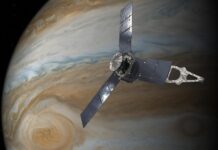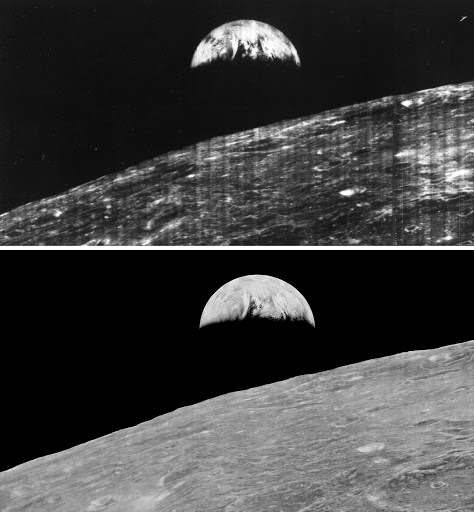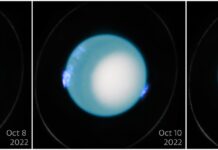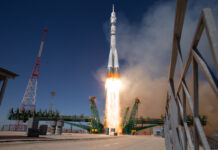Landing on another planetary body, whether it be the Moon, Mars, or another distant world, is a crucial achievement in any space mission. The United States’ journey into space has been significantly influenced by the research and development at NASA’s Langley Research Center, which has been pivotal in the entry, descent, and landing (EDL) processes of various missions. This legacy of exploration continues today as NASA gears up for contemporary lunar missions and future journeys to even more distant planets.
The beginning of NASA’s human space exploration journey can be traced back to Project Mercury, which was the United States’ inaugural human-in-space program. This ambitious program was spearheaded by NASA’s Space Task Group at the Langley Research Center. Project Mercury comprised five key areas of research and testing, each aimed at ensuring the safe return of astronauts to Earth.
The first area was an airdrop study, designed to understand the Mercury capsule’s behavior during its descent back to Earth. This study was crucial in ensuring that the capsule’s re-entry would be safe and controlled.
Secondly, researchers focused on escape systems, which eventually evolved into what is now known as the launch abort system. This system is critical for astronaut safety, providing a way to quickly escape from the launch vehicle in the event of an emergency.
The third area involved extensive wind-tunnel testing of the blunt-nosed capsule design. These tests were conducted at different altitudes, speeds, and angles of re-entry to ensure aerodynamic stability and safety for the capsule.
The fourth area of study addressed the problem of landing impact. The research led to the development of absorption systems designed to minimize the shock experienced by the capsule and its pilot upon landing.
Finally, there was a focus on drogue parachutes, which are smaller parachutes used to stabilize and slow the descent of the capsule at high speeds and altitudes. This research was essential in ensuring a safe and controlled landing for the capsule. The insights gained from these studies were instrumental in shaping the subsequent Gemini and Apollo programs.
In 1961, President John F. Kennedy made a bold commitment to land Americans on the Moon. This declaration marked the beginning of NASA’s Apollo program. In the following years, a team of NASA astronauts underwent rigorous training at NASA Langley’s Lunar Landing Research Facility (LLRF). This preparation was critical for the success of Apollo 11, which in 1969 saw the first humans set foot on the lunar surface. NASA Langley played a vital role in this monumental achievement.
Ahead of the Apollo landings, the Lunar Orbiter missions were launched with the objective of mapping the Moon’s surface and identifying potential landing sites. From 1966 to 1967, five successful Lunar Orbiter missions were conducted, with Langley Research Center leading the charge. These missions resulted in 99% of the lunar surface being photographed, aiding in the selection of suitable landing sites for human missions.
Following the triumph of the Apollo program, NASA turned its attention to Mars, setting its sights on exploring the Red Planet. This effort began with the Viking missions, which aimed to land on Mars and capture high-resolution images of its surface. The Langley Research Center was chosen to lead these pioneering Mars missions and has continued to play a significant role in subsequent Martian explorations.
As successful landings on Mars were achieved, NASA aspired to land larger payloads, which could eventually support human exploration. This led to the development of a new type of heat shield known as the Hypersonic Inflatable Aerodynamic Decelerator (HIAD). This technology allows for the use of inflatable heat shields to decelerate and protect a payload as it enters a planet’s atmosphere at hypersonic speeds.
Between 2009 and 2012, two successful Inflatable Reentry Vehicle Experiments (IRVE) demonstrated the potential of inflatable heat shield technology, paving the way for larger applications. In 2022, the Low Earth Orbit Flight Test of an Inflatable Decelerator (LOFTID) took place. This test used a larger aeroshell, showcasing the scalability and effectiveness of HIAD technology.
As part of the Mars Science Laboratory (MSL) mission, NASA Langley developed the Mars Entry, Descent, and Landing Instrument (MEDLI). This instrument was designed to gather crucial data from the MSL entry vehicle’s heat shield during its descent to Mars. In the 2020 Mars mission, MEDLI2 expanded on this work, contributing to the successful landing of the Perseverance rover and providing valuable data for future missions.
The Curiosity rover, launched in 2011, was the largest and most advanced rover ever sent to Mars at that time. Leading up to this mission, Langley engineers conducted millions of simulations of the critical entry, descent, and landing phase, often referred to as the “Seven Minutes of Terror.” Curiosity continues its mission to explore Mars, seeking evidence of past or present life on the planet.
In addition to these efforts, the Commercial Lunar Payload Services initiative is advancing the Artemis mission. This collaboration with commercial partners aims to develop the technology necessary to return humans to the Moon and pave the way for human exploration of Mars.
The Navigation Doppler Lidar (NDL) technology, developed at Langley Research Center, is another significant advancement. This technology uses lasers to help spacecraft identify safe landing sites. In 2024, NDL was utilized on the uncrewed Nova-C lander by Intuitive Machines. The laser instruments on board were designed to measure velocity and altitude with remarkable accuracy, providing significant cost and space savings for planetary missions.
Lastly, the Stereo Cameras for Lunar Plume Surface Studies (SCALPSS) aim to enhance our understanding of the lunar surface. These cameras, mounted on the bottom of a lunar lander, capture the interaction between the lander’s rocket plumes and the lunar surface. The SCALPSS 1.1 instrument has captured groundbreaking imagery of the Moon’s surface, providing valuable data for future lunar missions.
In conclusion, NASA Langley Research Center’s contributions to space exploration are both extensive and critical. From the early days of Project Mercury to the cutting-edge technology being developed today, NASA Langley continues to be at the forefront of space exploration, driving innovation and enabling humanity’s quest to explore the cosmos. For more detailed information, you can visit the official NASA website at www.nasa.gov.
For more Information, Refer to this article.


































